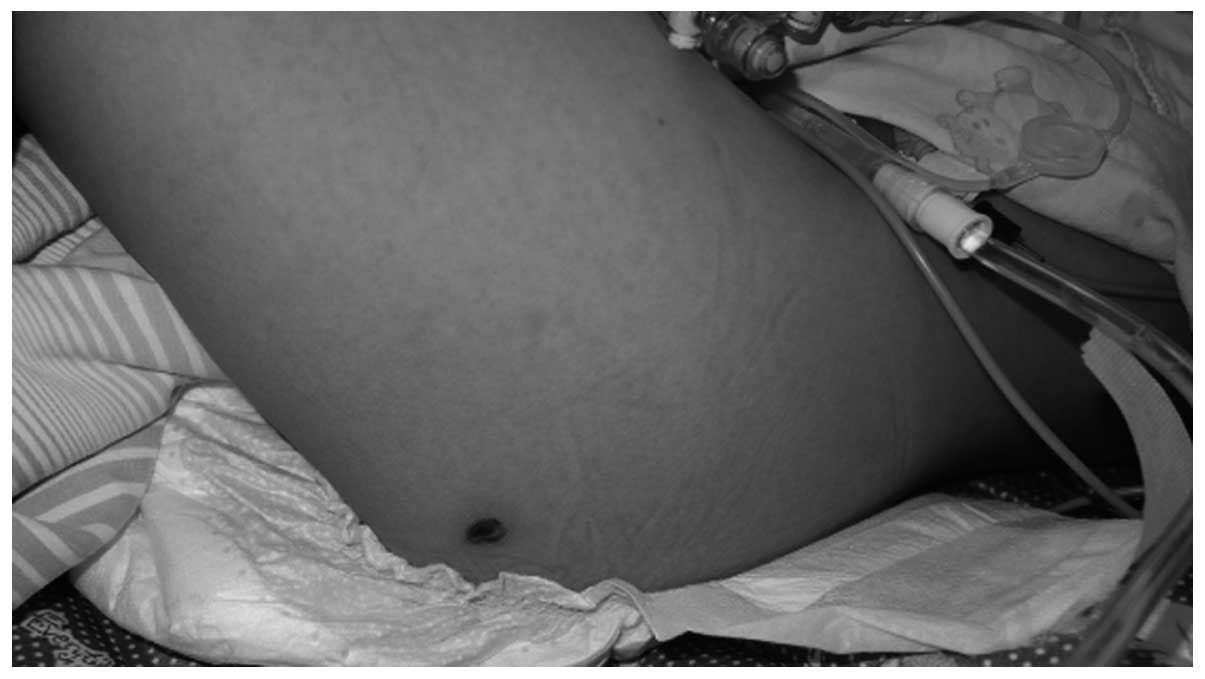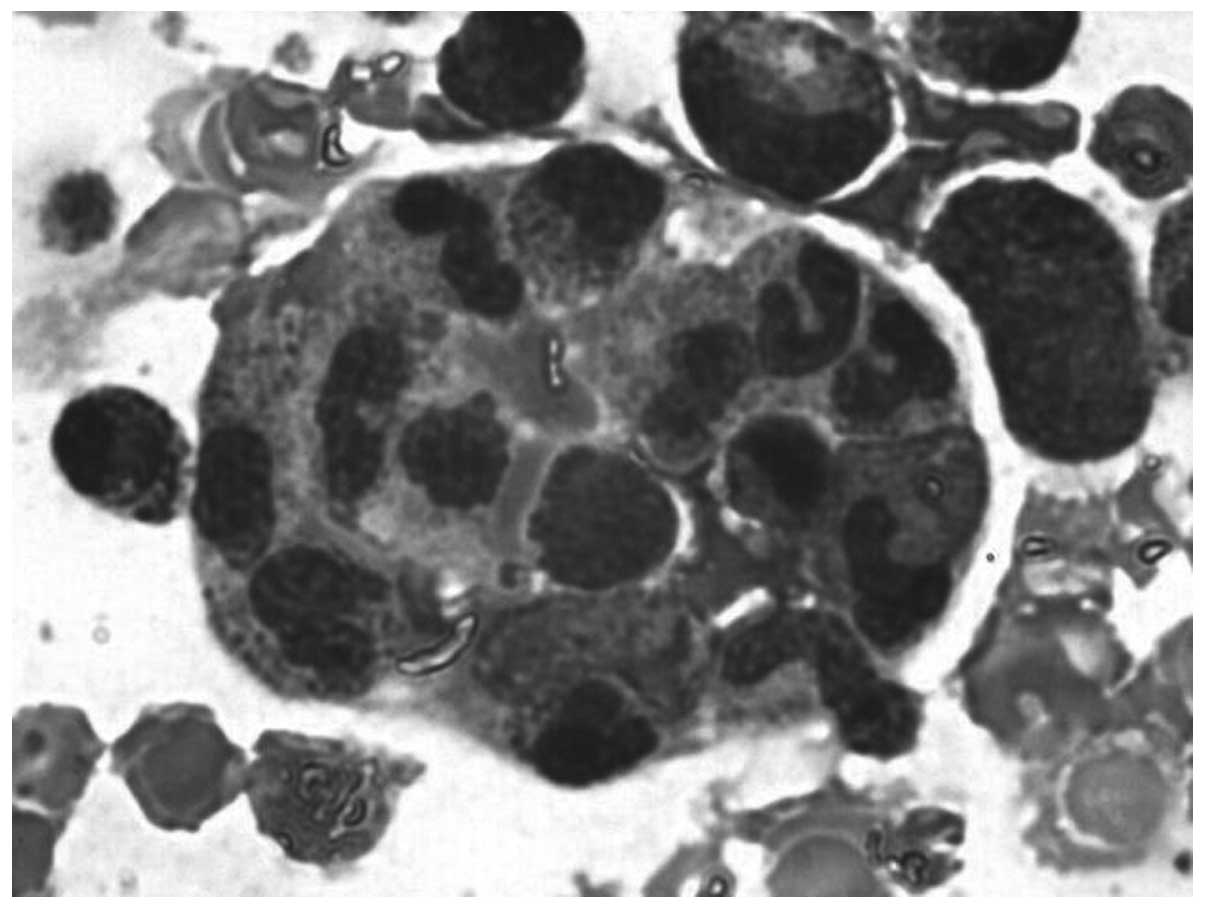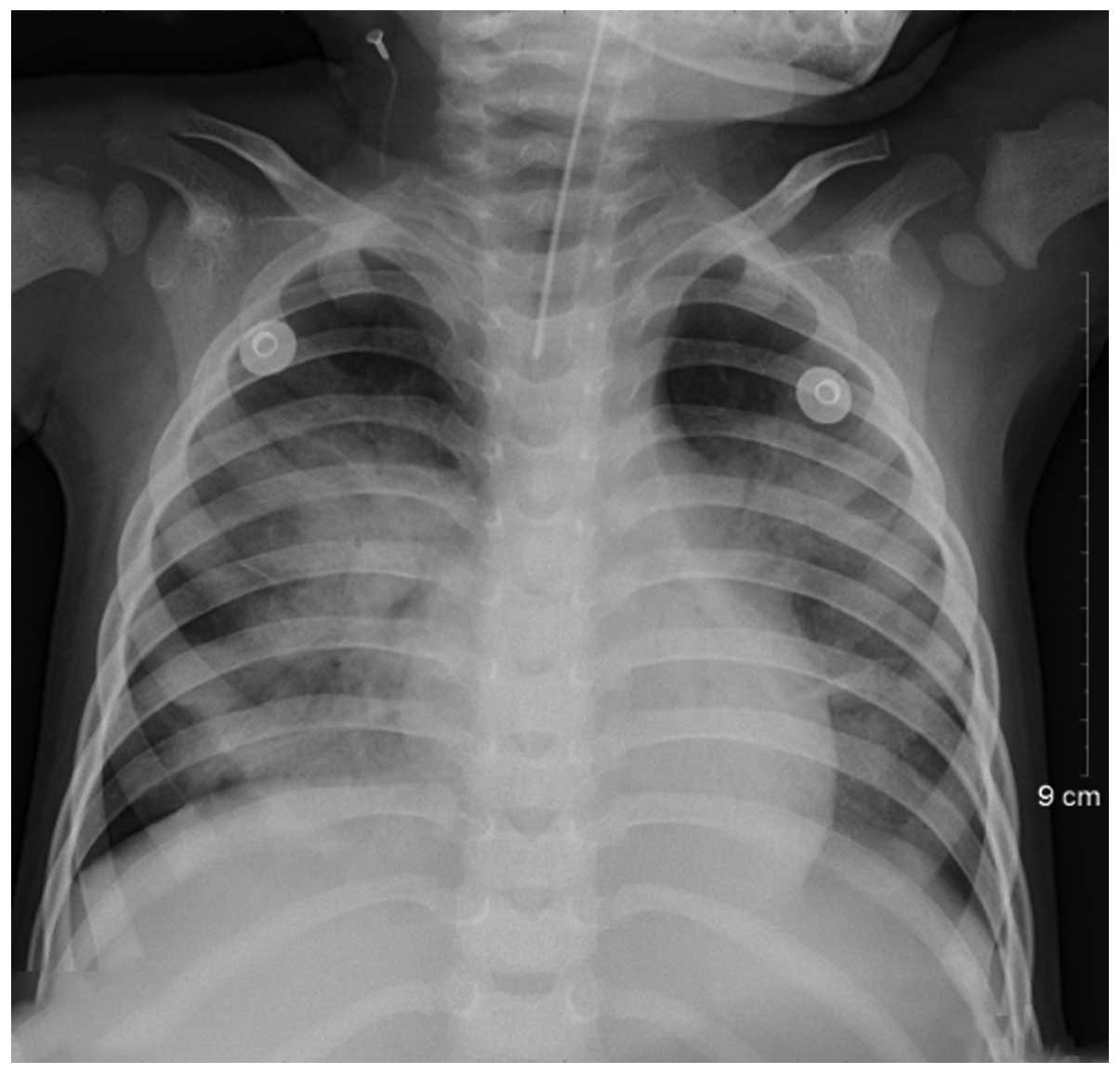Scrub typhus associated with hemophagocytic lymphohistiocytosis: A report of six pediatric patients
- Authors:
- Published online on: September 6, 2016 https://doi.org/10.3892/etm.2016.3668
- Pages: 2729-2734
Metrics: Total
Views: 0 (Spandidos Publications: | PMC Statistics: )
Total PDF Downloads: 0 (Spandidos Publications: | PMC Statistics: )
Abstract
Hemophagocytic lymphohistiocytosis (HLH) is a life-threatening immune disorder that may be inherited or secondary to infection, malignancy or rheumatological disease. The aim of the present study was to highlight the clinical features of scrub typhus-associated HLH in children. A retrospective study was performed on 6 pediatric patients with scrub typhus‑associated HLH. For each patient, medical records were reviewed and analyzed, and demographic, clinical and laboratory data and outcomes were collected. The duration of fever prior to admission ranged between 4 and 12 days. All patients exhibited persistent or intermittent fever, eschar, hepatosplenomegaly and lymphadenopathy at the time of diagnosis. Five patients experienced acute respiratory distress syndrome and disseminated intravascular coagulation (DIC) during hospitalization. Thrombocytopenia was detected in all patients with cytopenia involving two or three cell types, simultaneously. Coagulopathy with prolonged prothrombin time and/or activated partial thromboplastin time were noted in all patients. Markedly elevated serum ferritin levels (>1,500 µg/ml) were identified in all patients. Elevated lactate dehydrogenase (>1,000 U/l) was detected in 4 (66.7%) patients and elevated alanine aminotransferase was exhibited by 5 (83/3%) patients. Lung infiltrates and consolidation were the most common imaging findings. Only 1 patient succumbed, with DIC and multi‑organ failure. Of the survivors, 1 patient was lost to follow‑up, and the remaining patients are in remission with excellent general health, to date. In conclusion, HLH should be considered in severe pediatric cases of scrub typhus. Upon the early recognition of this syndrome, prompt and supportive treatment in the pediatric intensive care unit are vital.












